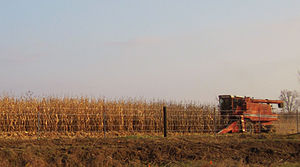Guest Editorial
By John Hart, American Farm Bureau Federation
Nothing enlivens a farmer’s spirit of optimism and hope for the harvest to come than spring planting. After winter months spent in planning and looking at market signals to determine what to plant, the miracle truly begins when the farmer puts seed to soil in the spring and prays for cooperative weather.
Spring 2011 brought particularly great expectations for America’s corn farmers. Robust demand and tight global stocks were telling farmers to plant more corn. And farmers responded to the market calls.
The prospective plantings report released by the Agriculture Department on March 31 indicated corn farmers would plant 92.2 million acres this year to meet the growing needs for food and fuel. If realized, the 2011 corn crop would be the second largest planted acreage in the United States since 1944, behind only the 93.5 million acres planted in 2007.
Farmers were ready to go, but then weather, their greatest friend and fiercest foe, had its say. Devastating floods dealt a staggering blow to farmers in many states. A spring that began in hope and optimisms was tempered with worry about getting the corn crop planted.
As of May 1, only 13 percent of the U.S. corn crop was planted, compared to 66 percent last year or the average of 40 percent, according to the Agriculture Department. Corn planting is clearly behind schedule in the eastern Corn Belt, and it is cause for concern. The encouraging news is that farmers in the western Corn Belt are making significant progress in getting corn planted while planting in the southern Corn Belt is nearly complete.
University research reveals that the optimal planting time for corn is late April to early May. Yields often suffer if the corn isn’t in the ground by the middle of May. However, favorable summer growing conditions can often make up for late planting, and corn farmers are clearly hoping for cooperative summer weather.
Most of the corn crop should get planted, and experts who study the corn market expect the U.S. will reach 92.2 million planted acres. Corn farmers are hoping for a repeat of 2009 when favorable summer growing conditions compensated for planting delays.
Worry about the corn crop this year is particularly pronounced because supplies are so tight. U.S. ending stocks are forecast to be 675 million bushels in 2010-2011, a 15-year low. For U.S. stocks to reach the more comfortable level of 1 billion bushels, the United States will need an average yield of 163.5 bushels per acre, which is just 1.2 bushels short of the record high yield set in 2009. To rebuild stock levels and meet growing demand for food and fuel, strong yields are a must, and virtually every one of the intended 92.2 million acres of corn must be planted.
Throughout history, farmers have proved to be reliable. They work hard, quietly overcome challenges and dependably deliver a harvest that meets market needs. If the weather cooperates, corn farmers will once again deliver this year.
John Hart is director of news services for the American Farm Bureau Federation.
Related articles
- Arizona Farmers are Busy Planting (fillyourplate.org)
- 5 Reasons Subsidies Aren’t Making Americans Fat (fillyourplate.org)
- Weather hasn’t been a friend to farmers (usatoday.com)



